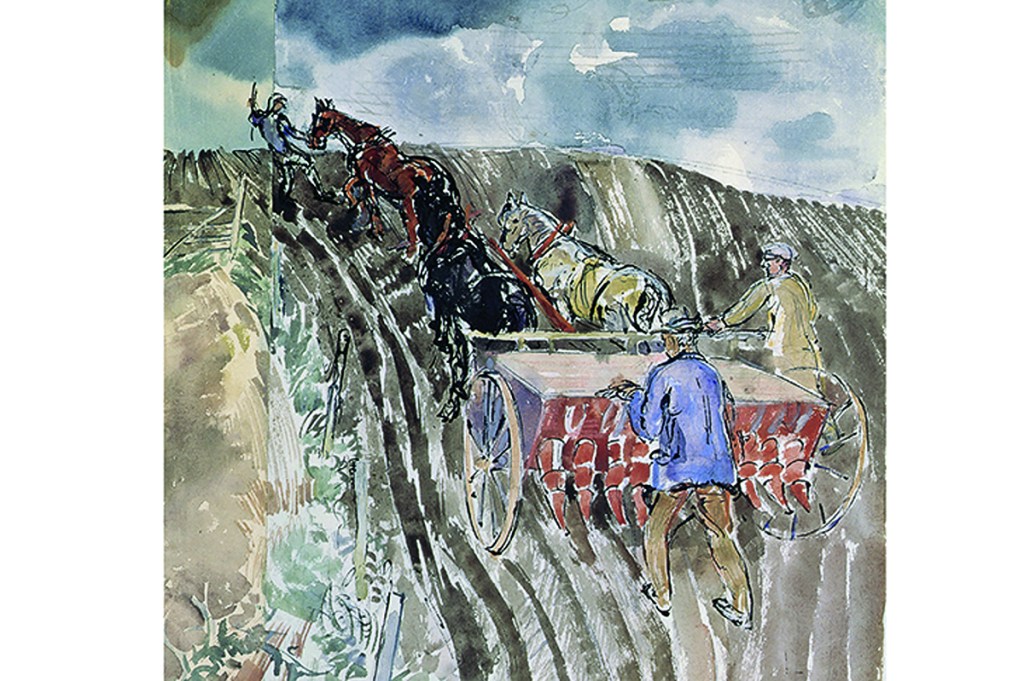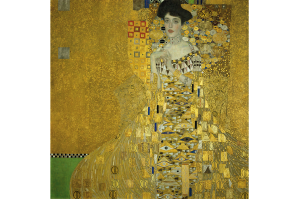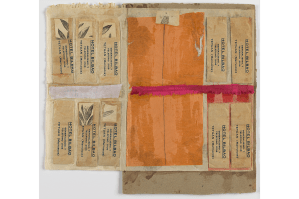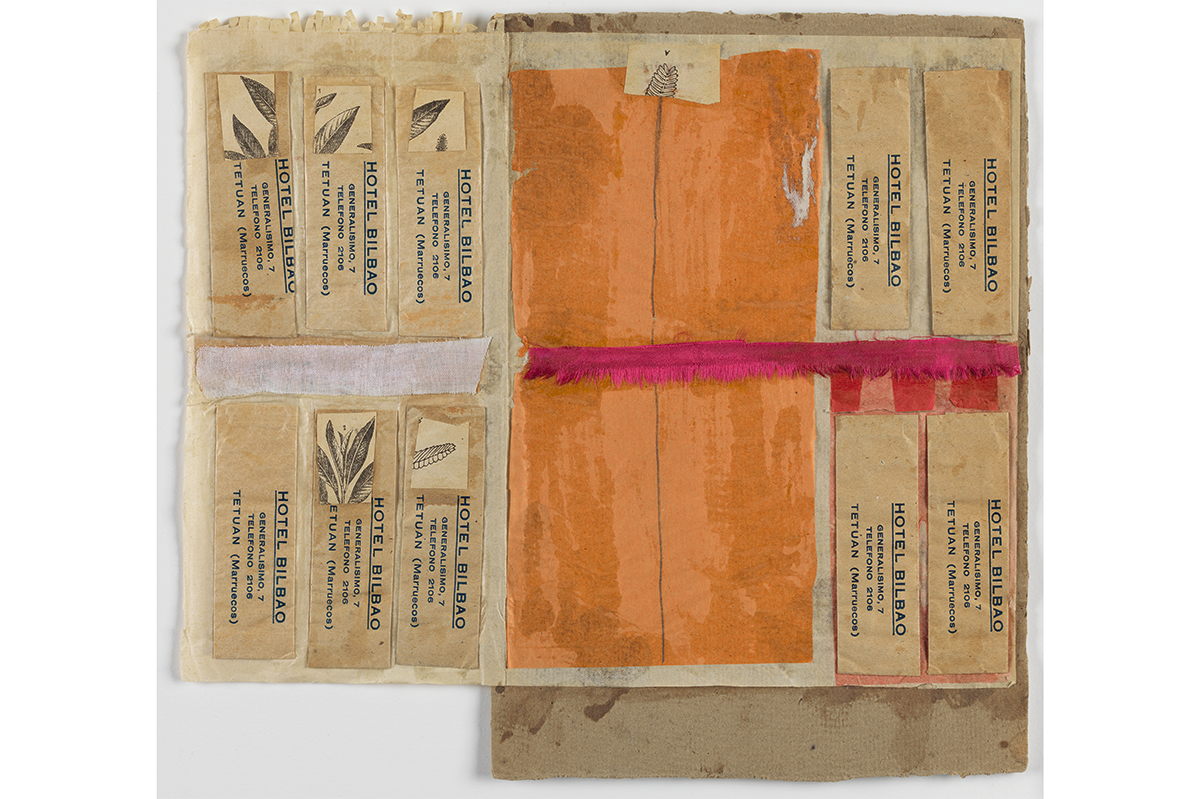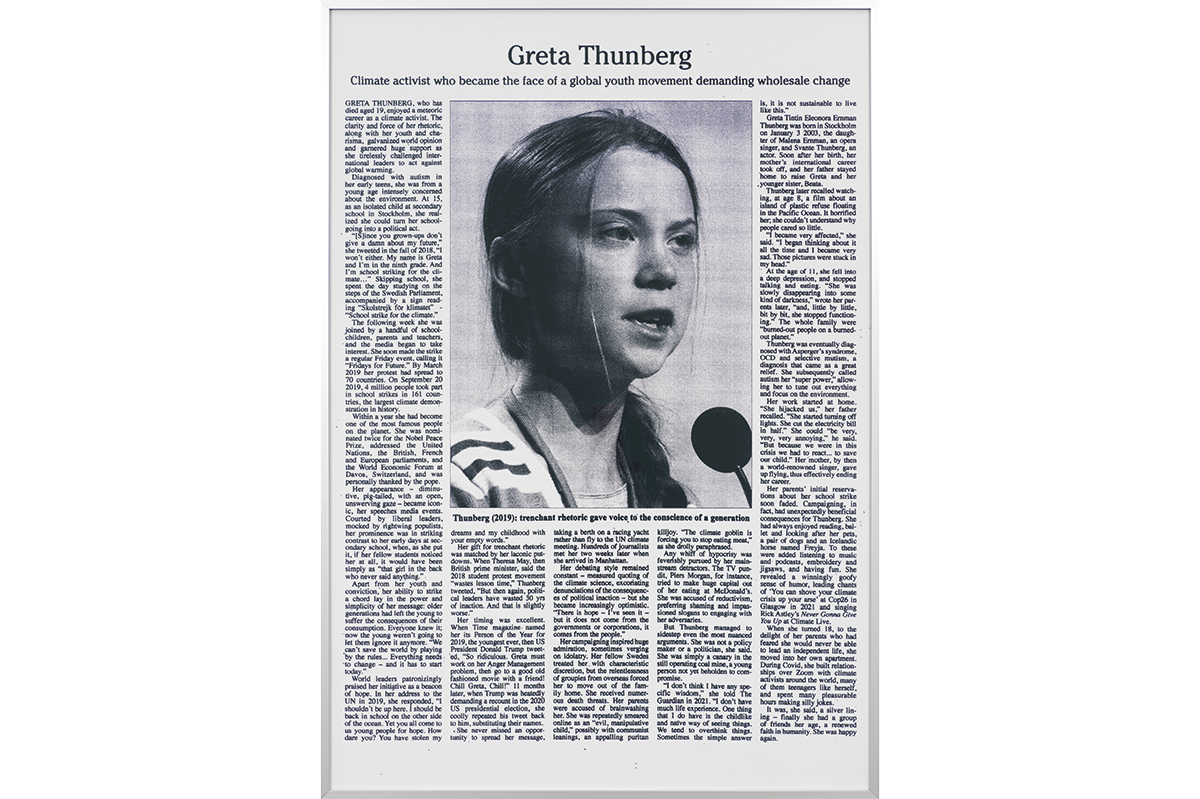Thomas Hennell is one of that generation of painters born in 1903 whose collective achievements are such an adornment of modern British art. Among his contemporaries are Edward Bawden, Richard Eurich, John Piper, Eric Ravilious and Graham Sutherland. Some of these have been overpraised (Sutherland’s reputation was unhelpfully inflated for many years, then suffered a crash), others underrated, such as Eurich’s. In the current mood of reassessment, careers and deeds are being looked at again, and Hennell has benefited accordingly. Jessica Kilburn’s hefty book is very tangible evidence of this.
The English countryside was Hennell’s first love, and he came to prominence as an illustrator — and, indeed, writer — of books about how the land and the way it was cultivated were changing. His extensive knowledge was based on experience acquired during his travels by bicycle around the counties, and learned through the activity of drawing. He drew the farm implements that were being superseded by mechanization, the countrymen who used them and the landscape they inhabited.
His own very visual writing is quoted extensively and effectively in this new biography. He wrote poetry, a brave book about the mental breakdown which kept him hospitalized from 1932 to 1935 with a diagnosis of schizophrenia, and a survey of traditional English husbandry, entitled Change in the Farm. He was a prolific letter writer, and thus supplies much material for this well-written, intricately researched and hugely detailed account of his life and work. Generously illustrated, with informative picture captions, the book has a relaxed breadth which in some ways suits the subject, though a shorter text might have had more chance of winning converts to Hennell’s cause.
Thomas Barclay Hennell was brought up in Kent, the second of four children of the Revd Harold. In the 18th and 19th centuries the Hennell family produced several celebrated silversmiths (their work can be seen in the V&A), while there were missionaries on his mother’s side, and she herself studied art at the Slade. After Bradfield College, Hennell went on to teacher training at Regent Street polytechnic where he was taught art by A.S. Hartrick, one of the unsung heroes of modern British painting. A talented artist who knew and worked with Van Gogh, Lautrec and Gauguin, and who larded his teaching with their examples, Hartrick also taught David Jones and Victor Pasmore among many others, and an exhibition needs to be put together about his role in bringing a sense of modern art to English art education.
Most of Hennell’s work dates from after his breakdown, a short career of about 12 years, though he managed to make some 4,500 paintings and drawings before he was killed on active service in Java in October 1945. Piper called him an English rustic artist, but he was more than that, and his potential was beginning to be revealed by his work as an official war artist. His final years were exceptionally productive, by which time he had overcome many awkwardnesses of style (though he still had trouble with the relative scale of figures and surroundings) and had developed an intensely personal idiom of watercolor painting which carried the imagery in rhythmic linearity and expressive bursts of color. He made brilliant use of the white of the paper to scatter light vibrantly through his compositions.
Then there is Hennell’s intriguing habit of painting his figures so lightly that they are often semi-transparent. They’re not intended to be ghosts so much as a metaphor to express man’s transitoriness on earth. Human beings come and go, but the earth remains: Hennell conveyed this poignantly with his hardly-there figures. He was endearingly modest, claiming that two-thirds of his work was not worth exhibiting, and hoping as late as 1945 that he might yet ‘learn to paint’. His watercolors of Iceland (where he replaced Ravilious as war artist) are particularly fine, and many of his best works have a robust delicacy as well as beauty.
His friend Bawden wrote of Hennell:
‘I don’t believe he possessed a natural facility either as a draughtsman or as a painter. He acquired skill painfully, by infinite persistence, but he was determined and dedicated, and it was Hartrick’s influence as a teacher and friend that helped most of all to release and to shape Tom’s talent.’
Bawden ended his tribute by stating that both he and Ravilious regarded Hennell as ‘a man of genius’. Whether one accepts this estimate or not, it is indisputable that Hennell was an artist and writer of distinctive achievement, whose work should be more widely known. This substantial and impressive book deserves to lead the way in a Hennell revival.
This article was originally published in The Spectator’s May 2021 World edition.



